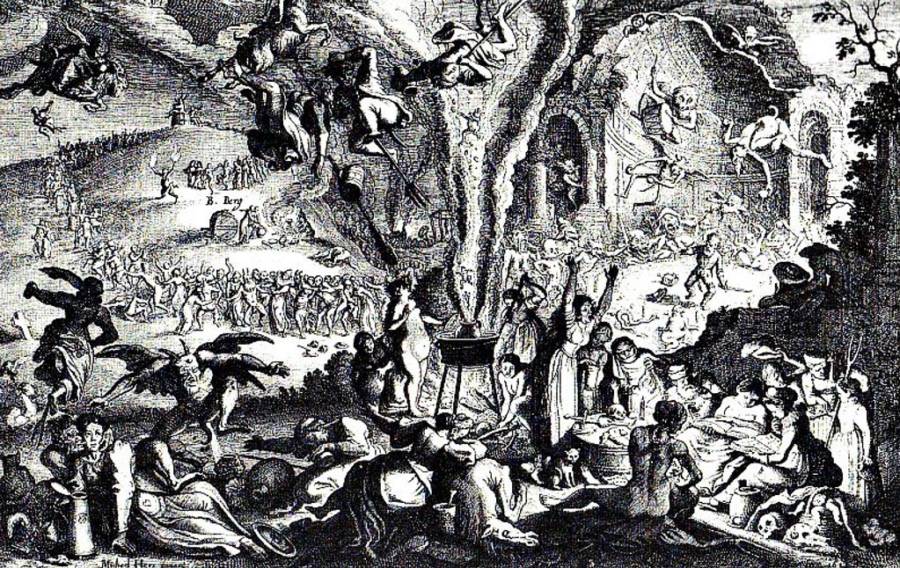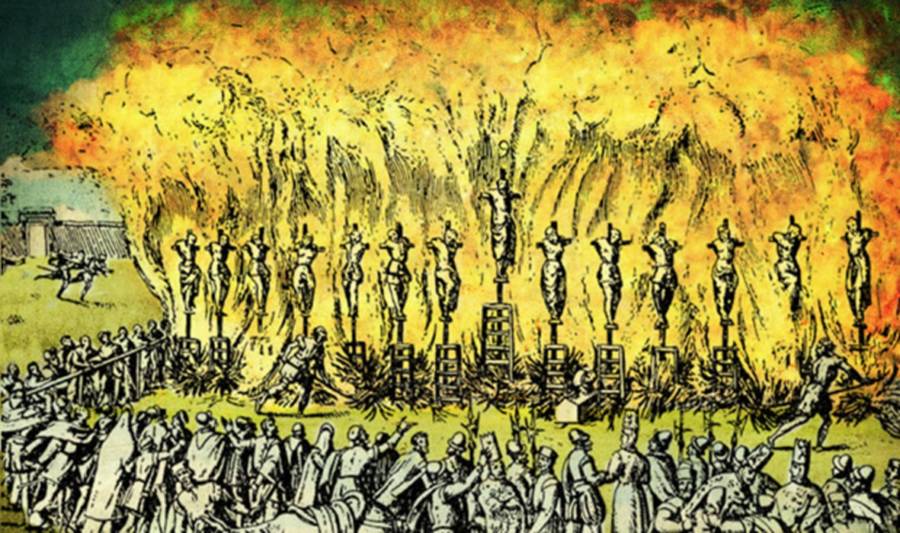If you thought the Salem witch trials were bad, wait until you learn about what went down in Spain.
Although it’s the Salem witches of colonial New England that we usually associate with witch trials, the persecution of those believed to be witches is not a concept limited or even native to the U.S. In fact, the largest scale and most ruthless of witch trials didn’t take place anywhere near the United States, but in Spain.
Spanish Witch Hunts

Ancient Origins
The witch trials in both Spain and Salem took place in the 17th century, albeit on opposite sides of the Atlantic Ocean.
Religion motivated both acts: In Salem, colonists had left the Church of England and taken up Puritanism, a religion by which they wanted everyone to abide.
In Spain, the Catholic Church sought heretics for punishment, and in so doing homogenizing religion in Europe. For both groups, the “witch” became a particularly high-profile flavor of heretic, but no witch trials in history rival those that occurred in the Basque village of Zugarramurdi.
The Spanish Inquisition was essentially a joint effort between the Catholic Church and the courts to suss out and persecute baptized members of the Church who didn’t follow its teachings – or those who actively went against them.
This mostly meant Jews who had converted to Catholicism in an attempt to survive the last Inquisition, which had specifically focused on killing members of the Jewish faith.
The irony was that the Catholic Church had told the Jews to convert. So during the next Inquisition, the Church essentially said that the Jews had not converted genuinely, and therefore must be killed.
If it sounds like the Church was simply looking for a reason to go after the Jews, that’s because it’s pretty much what happened.
Once people began to convert to the Catholic faith, they became part of the community. Many Catholics did not appreciate that assimilation and held animosity toward the converts when they entered Christian spaces and thrived.

Ancient Origins
The Church mandated that those accused of heresy testify in the tribunal court. Accusation was tantamount to conviction: Anyone could testify against the accused, and they would never learn who had accused them of the act in the first place.
Given the stakes, it was often the case that the accused’s family wouldn’t even testify on the individual’s behalf, as doing so would mean they would most likely be deemed heretical as well. If the accused refused to testify, tribunals automatically assumed the person to be a heretic and sentenced the individual to death.
The Church did not go on its heretic hunt for purely religious purposes; they did it for money, too. The Church could confiscate property and assets of the accused, and therefore could earn a pretty penny from the trials.
Thus, the Church broadened its aim to persecute not just rogue Catholics, but any non-Catholics. Muslims, Jews, and Protestants were commonly among the accused. So were witches.
The Trials
The Church subjected the accused to a trial, which they displayed for the entire village. In fact, it was something of a social event. People would gather to witness (at times) hundreds of people deemed heretics burned at the stake.
The auto-de-fe, as the Church called it, would be scheduled for the same day as a holiday or festival. At the very least the Church tried to schedule them on Sundays so that citizens would be able to attend.
The accused would be marched into town — usually in some horrific state of dishabille and disillusionment — to their deaths. Of the thousands who suffered this fate, a small percentage of them had not just been deemed heretics, but specifically witches.

Wikimedia Commons
In its hunt for heretics, the Catholic Church was generally intolerant toward any non-Catholic individual, but witchcraft presented an added layer of intrigue.
The construct of witchcraft has existed in some form, either philosophical or in magical practice, since the beginning of human history. As organized religion began to take hold — namely Christianity — Wicca became anathema in many religious circles. Witchcraft quickly became synonymous with the devil, and those suspected of practicing it were persecuted.
Catholicism in the era of history’s most elaborate and thorough witch hunts rejected witchcraft not just on the basis of “devil worship,” but clear condemnation of witchcraft in the Bible.
Not to mention scripture’s literal instructions to smote those who practice it: “Thou shalt not suffer a witch to live.” (Exodus 22:18)
While those accused of witchcraft were most notably burned at the stake, the Bible had actually suggested stoning, another common practice.
Through the persecution of heretics, witches among them, the Catholic Church maintained its authority. The suppression of those who went against the Church, or those who were even suspected of it, allowed the Church to continue to assert its beliefs in its attempt to make Catholicism the dominant force of collective morality.
The Spanish Inquisition was unique only in that the secular rulers of the monarch (which was Catholic) came together with the Church to approve and oversee the administration: an agreement between church and state, you could say.

Atlas Obscura
For several hundred years, no one really knew the extent of the witch trials that took place in the Basque Country around this time period — mainly because the Catholic Church hadn’t supplied the records.
But the Vatican eventually opened the archives to researchers so that they could better understand not just the motivation for the inquisitions, but the methods.
It was at this point that the sheer scope of the inquisitions first became known. It’s believed that the Church accused around 7,000 people of witchcraft; tried several thousand of them, and about a dozen died as a result (of note: several actually died while being tortured during their trial, and therefore a symbolic effigy was paraded through the village for burning at the stake).
The Basque witch trials put those in Salem (which are far better known in pop culture) into a much broader context: In Salem, Puritans only investigated a few hundred people, which led to 20 deaths.
Salem likewise attacked female members of the community, whereas the demographics of the accused in Basque included men, women, and children from all socioeconomic backgrounds.
What happened in Salem was no less awful just because it wasn’t as large of a scope as what happened in Spain during the Inquisition, but it presents a stark reminder that popular perspectives on history leave out a lot of stories vital to understanding contemporary society, and provide important insights into what motivates organized acts of violence.
After all, religious intolerance and the desire to create a more homogeneous society are not simply a thing of the past.
Next, learn about the historical origins of the witch and meet some modern day witch doctors.





